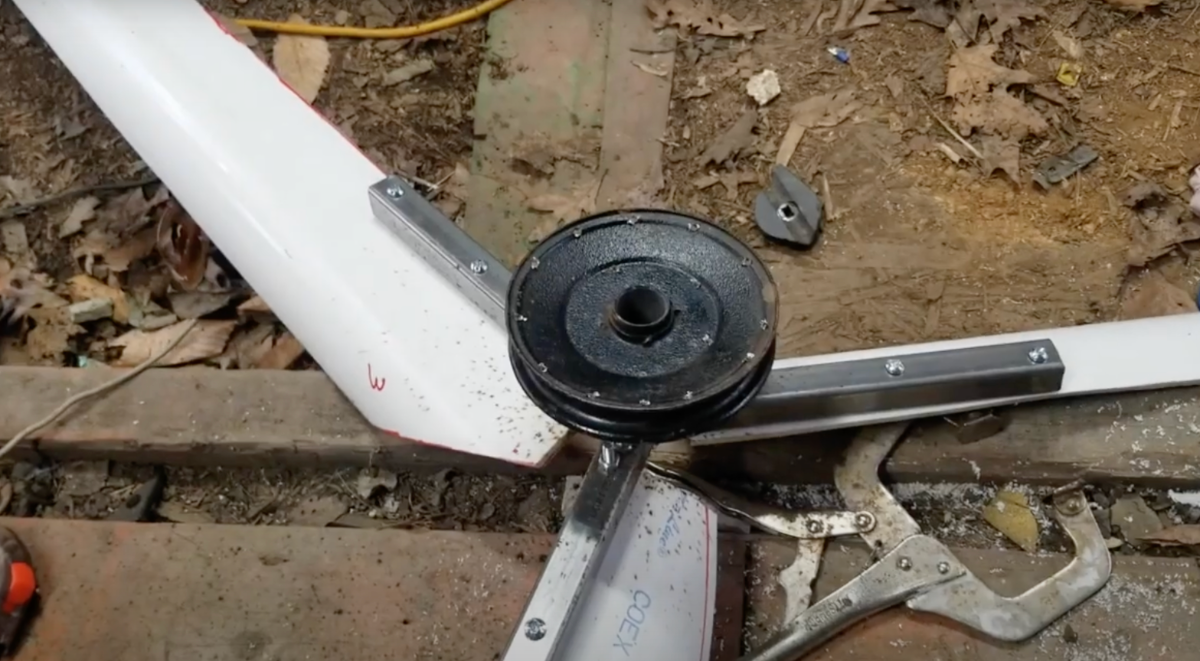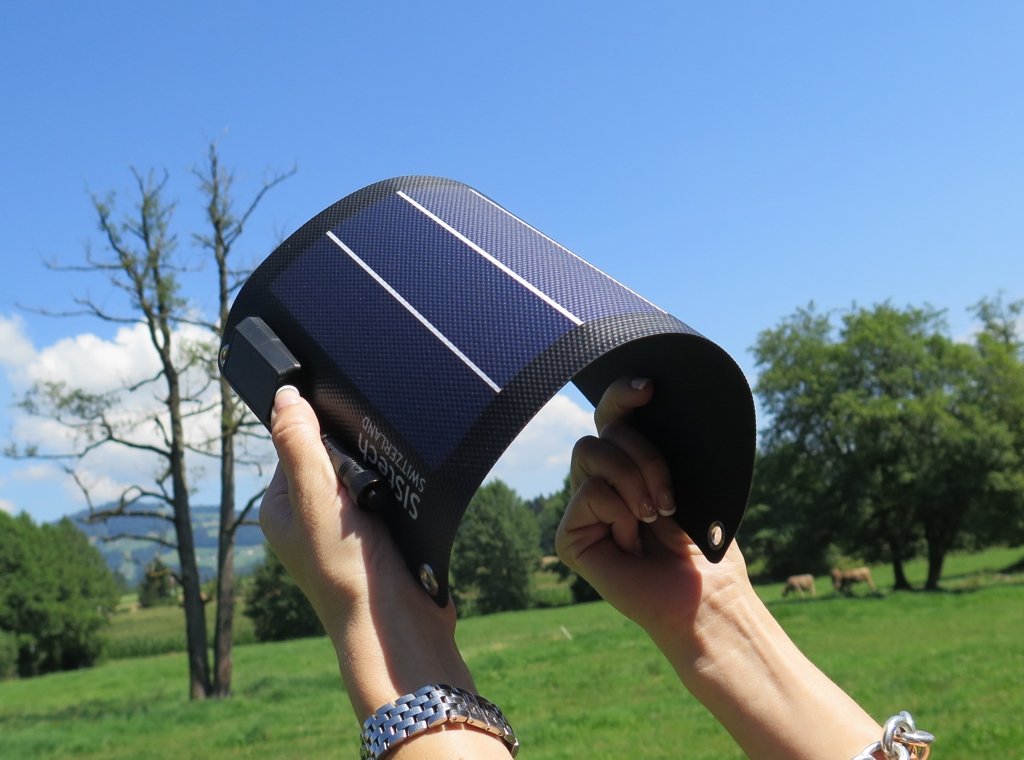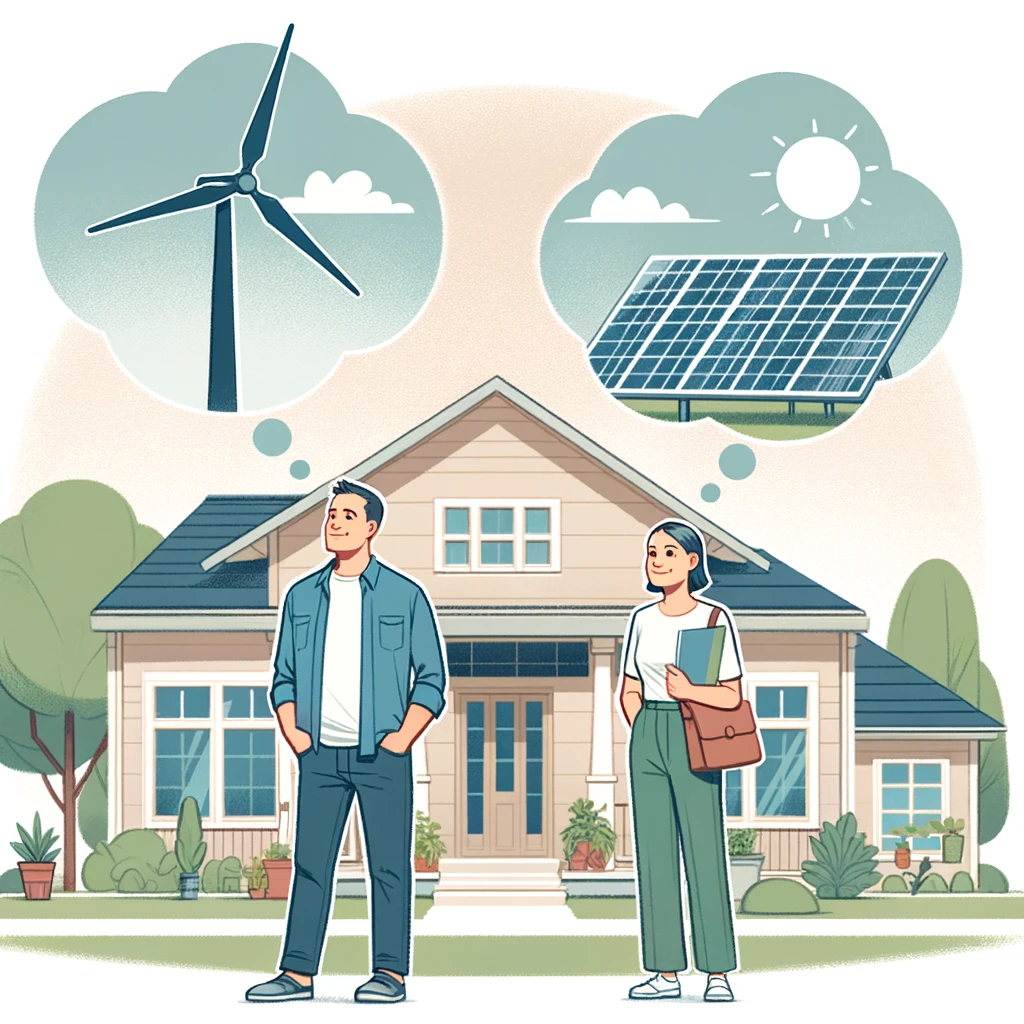
Greetings, fellow proponents of sustainable living! Today, we embark on a journey to learn how to build a DIY wind turbine, and explore the potential of home made wind generators as an eco-conscious energy source for homes.
When considering renewable energy options, the spotlight often shines on solar power, yet wind energy holds its ground, especially in wind-rich areas. In our focus today lies the craft of building a customized DIY wind turbine system tailored to your household’s energy needs or to whatever energy needs you may have.
Our aim? Uncovering the steps involved in constructing a personalized DIY wind turbine setup. Together, we’ll demystify the process of harnessing the kinetic power of the wind, transforming it into a reliable, renewable energy source for your home.
Without further ado, let’s now embark on this transformative wind-powered odyssey. Let’s navigate through the seas of sustainable energy and explore the art of DIY wind energy generation.
- 1. Understanding the Potential of Wind Power
- 2. Crafting Your DIY Wind Turbine
- 3. DIY Wind Turbine Installation and Safety Measures
- 4. Connecting the System: Linking Your Turbine to Power
- 5. Maintenance and Troubleshooting: Keeping Your Turbine Running Smoothly
- 6. Cost Breakdown and Long-Term Benefits: Investing in Renewable Energy
- Conclusion: Embracing Wind Power for Sustainability
- BONUS: Resources to help you build your own DIY Wind Turbine
Understanding the Potential of Wind Power
First thing first. When venturing into the world of wind energy, DIY wind turbine or not, it’s quite important to gauge your local wind resources and align them with your household’s energy requirements. It is this crucial step that will allow you to determine the pertinence of pursuing the idea of generating wind energy at home. Here’s a breakdown:
1- Identifying Your Energy Needs
Determining the energy needs of your household is the first step in tailoring your wind turbine setup. But how does one do that? By assessing your typical energy consumption patterns: electricity usage, appliance demands, and heating/cooling requirements. Now, are you aiming to cover a fraction of your energy needs or are you striving for a complete renewable energy makeover? Balancing your aspirations with the practicalities of wind energy production should guide the size and capacity of the turbine you need.
2- Assessing Wind Resources
The next step is to research and understand the wind dynamics specific to your location. You can use wind maps or anemometers to track average wind speeds and patterns over different seasons. Understanding the wind directions, potential obstructions, and turbulence surely helps in assessing the feasibility of a home wind turbine. The results here should give you a great indication whether there’s enough wind in your area to power your future home wind generator. In some cases, results may suggest you to combine wind energy with solar power to meet your energy requirements.
3- Sizing Up Your DIY Wind Turbine
Now that you know there’s enough wind in your area and that you’ve decided what your needs are, it’s time to align the turbine size with your energy requirements. Larger turbines can capture more wind and produce substantial energy but may need ample space and resources. Conversely, smaller turbines may fit snugly in confined spaces but might not yield as much power. Striking a balance between turbine size and energy output is key for an efficient and cost-effective wind energy system tailored to your needs.
Crafting Your DIY Wind Turbine
Are you ready to roll up your sleeves and bring your wind turbine to life? Let’s dive deeper into the step-by-step process:
1- Gathering the Building Blocks
Let’s get our toolkit ready! Gathering these essentials serves as the foundation for your wind turbine construction. By exploring various sources for materials and understanding their functionalities, you’re set to embark on your DIY wind turbine journey.
- Sturdy Pipes
- Robust Blades
- The Generator
- Wires and Connectors
- Tower Structure
2- Crafting the DIY Wind Turbine Blades
Crafting the blades is where the magic happens! Although blades can be found and bought in select stores or online, recycling any adequate material that may be lying around could certainly be a great option. Let’s explore how to create these vital components using accessible materials, including recycled options:



- Material Selection: Consider repurposing sturdy materials for your turbine blades. Old PVC tubes and panels, durable wooden planks, or even recycled plastic containers can serve as excellent starting points. Their strength and durability make them ideal candidates for wind-catching blades.
- Shape & Design: When fashioning the blades, simplicity is key. Carve or cut the materials into aerodynamic shapes resembling airplane wings. Keep in mind that a smooth, curved surface allows the wind to flow smoothly, optimizing energy capture. Look for online templates or guides that can aid in crafting the blade shape effectively.
- Ensuring Balance: Now that you found the material and carved out the blades, balancing them is critical for optimal performance. Ensure they’re of equal length and weight to maintain equilibrium during rotation. Simple tools like a scale or ruler can help ensure uniformity among the blades.
By considering recycled materials like plastic containers or salvaged wooden planks and embracing a simple yet effective design, you can craft wind turbine blades that efficiently capture wind energy. Utilizing readily available materials makes this step both eco-friendly and cost-effective.
3- Assembling Your DIY Wind Turbine Generator
Now, let’s focus on the powerhouse behind your wind turbine—the generator. Here’s a deeper look at assembling this critical component and utilizing recycled materials:


- Repurposing a Motor or Generator: Consider salvaging a motor from various sources like old appliances, such as washing machines or treadmills. These motors can be repurposed into generators by adapting them to harness wind power. Alternatively, seek used or surplus generators available at salvage yards or online platforms, reducing both cost and environmental impact.
- Gear and Pulley System: Creating a gear or pulley system might be necessary to adjust the rotational speed of the generator. Repurpose gears or pulleys from old machinery or consider salvaging these components from discarded equipment. These recycled parts may need to be modified to suit the specific requirements of your wind turbine setup.
- Utilizing Recycled Components: Explore the world of recycling for potential generator components. Salvage copper wiring or electrical elements from unused electronics or appliances. Repurposing these materials can significantly reduce the need for new resources while contributing to a sustainable DIY approach.
- DIY Adaptations: Modifying the generator to suit wind energy conversion might require some tinkering. Seek guidance from online tutorials or renewable energy forums that offer insights into adapting motors or generators for wind power applications. Remember, repurposing and adapting existing components can be both cost-effective and environmentally friendly.
By repurposing motors, salvaging gears and pulleys, and exploring recycled materials like copper wiring, you can assemble a functional generator for your wind turbine. Incorporating recycled components not only reduces costs but also promotes a greener approach to harnessing wind energy.
4- Constructing the Tower
Erecting a sturdy tower is pivotal for the success of your wind turbine. Here’s a closer look at constructing a durable tower while considering recycled materials:
- Material Selection: Consider recycled materials that offer strength and stability for your tower. Sturdy metal poles salvaged from old construction sites or disused structures can serve as excellent tower supports. Repurposed steel pipes or aluminum structures are also durable options that can withstand wind forces.
- Wooden Alternatives: Wooden towers are another viable option. Salvage sturdy wooden beams or lumber from old buildings or discarded construction projects. Ensure these materials are treated for weather resistance to prolong their lifespan when used in outdoor settings.
- Ensuring Stability: When constructing the tower, prioritize stability and height. Adequate height ensures the turbine catches optimal wind speeds. Consider anchoring methods, such as concrete footings or guy wires, to secure the tower and prevent swaying or tipping.
By elaborating on each step in the DIY wind turbine process, from gathering materials to constructing the tower, we aim to make the journey more accessible for all green energy enthusiasts. Simplifying blade crafting, generator assembly, and tower construction lays the groundwork for anyone eager to venture into the realm of wind-powered energy production.
DIY Wind Turbine Installation and Safety Measures
Now that the components are ready, it’s time to focus on installation and safety measures to ensure a secure and effective wind turbine system.
Location and Elevation:
Selecting the right spot is key. Ideally, we should be looking for an open area free from any obstructions that might disrupt wind flow. It is also good to give it enough elevation by mounting the turbine at the top of a sturdy tower, allowing it to take on stronger winds.
Another important detail to lookout for is securing the tower foundation. Whether through concrete footings or guy wires, securing your home wind turbine will help ensure stability and prevent swaying. Of course, the less swaying and shaking, the better for the longevity of your home wind generator.
Electrical Integration and Maintenance:
You should always prioritize safety when connecting the turbine to your home’s electrical system. Seek professional assistance to ensure proper wiring and integration with the household grid or batteries, mitigating electrical hazards. This is your typical case of ”better safe than sorry”. In addition, implement routine maintenance checks to inspect blades, wiring, and overall structural integrity.
Safety Protocols and Emergency Preparedness:
You should establish emergency shutdown procedures and familiarize yourself with protocols in case of high winds or unforeseen emergencies to prevent damage or accidents. Prioritizing these safety measures and regular maintenance should foster a safe and efficient wind turbine system for your household.
Connecting the System: Linking Your Turbine to Power
1. Wiring Your Turbine:
A. Choosing Weather-Resistant Wiring
The first step is wiring the turbine to carry the electricity it generates. We would strongly suggest to look for outdoor-rated electrical cables capable of enduring various weather conditions. Look for cables marked as “outdoor-rated” or “UV-resistant” to ensure durability against sunlight, rain, and temperature changes.
Thicker gauge wires (with lower AWG numbers) are better for longer distances, minimizing resistance and efficiently handling the electricity produced by the turbine. Copper wiring is commonly used due to its excellent conductivity and resistance to corrosion.
B. Considering Cable Types
Depending on the installation location, consider different cable types. Direct burial cables are suitable for underground installation without additional conduit, designed to resist moisture. In addition, armored cables offer extra protection against physical damage, rodents, or external impacts, ideal for areas prone to such risks. Prioritize high-quality insulation like cross-linked polyethylene (XLPE) or polyvinyl chloride (PVC) designed for outdoor use, safeguarding against moisture, sunlight, and temperature changes.
C. Recycling and Repurposing Wires
As previously mentioned, consider salvaging wires from disused electronics, appliances, or construction projects. Old extension cords or cables from retired electrical devices can often be repurposed for wind turbine wiring, provided they meet the necessary gauge and insulation requirements. However, when recycling wires, it’s crucial to ensure they are in good condition, with proper insulation intact, and capable of withstanding outdoor conditions. While recycling wires, prioritize safety and effectiveness to guarantee efficient electricity transmission.
2. Connecting to the Grid or Batteries:
Let’s now talk about how this electricity gets into your home. Some systems link directly to the power grid, feeding excess electricity back to the grid when your home doesn’t need it. Others store the excess energy in batteries for later use, like when the wind isn’t blowing. Grid-connected systems often require special meters and agreements with your power company. So if this is your goal, you should start by contacting the utility company that serves your area. From then on, they should be able to guide you in the right direction.
Battery systems on the other side, involve installing a battery bank to store excess electricity. The voltage and capacity (mAh) of the battery will most likely be dictated by your goals and energy needs. There are many batteries out there to choose from and this topic could be a complete article of its own. (That’s an interesting topic. Ok, I’ll do it, it’s on the list!)
3. Compatibility Check and Inverter Integration:
Making sure the electricity produced by the turbine matches what your home needs is important. Sometimes, the generated power might not match your home’s electrical system. This is where an inverter plays a vital role. It acts as a translator, converting the turbine’s power into a form compatible with your home’s needs. An electrician adeptly installs and integrates the inverter to harmonize the two power sources.
In a nutshell, connecting your wind turbine to power your home involves strategic wiring, expert assistance from an electrician to ensure a secure connection, and integrating an inverter for compatibility. Choosing between linking to the grid or utilizing batteries involves careful planning and may require additional arrangements to ensure efficient energy utilization.
Maintenance and Troubleshooting: Keeping Your Turbine Running Smoothly
Ok, so your DIY wind turbine is up and spinning. From now on, your focus will be to maintain your wind turbine to ensure it operates efficiently. Here’s how to tackle maintenance and common troubleshooting:
- Regular Inspections: Perform routine checks on the turbine, focusing on blades, wiring, and tower integrity. Look for signs of wear, damage, or loose connections. Inspect the foundation and ensure it remains sturdy.
- Lubrication and Cleaning: Regularly lubricate moving parts to reduce friction and ensure smooth operation. Clean debris or dirt buildup on the blades to maintain optimal wind capture. You should also use gentle cleaning methods to avoid damaging the turbine components.
- Monitoring Energy Output: Keep an eye on the energy output. Sudden drops in power generation might signal issues. Track performance against expected outputs to detect potential problems.
- Troubleshooting Common Issues: Identify and address common issues like blade erosion, wiring damage, or mechanical wear. Addressing these early prevents larger problems.
- Seeking Professional Help: When facing complex issues or uncertainties, don’t hesitate to seek professional assistance. Certified technicians or turbine specialists can diagnose and resolve intricate problems effectively.
Regular maintenance and prompt troubleshooting are key to keeping your wind turbine system in top shape. By staying proactive and addressing issues swiftly, you ensure a sustainable and reliable source of renewable energy for your home.
Cost Breakdown and Long-Term Benefits: Investing in Renewable Energy
Understanding the costs and long-term advantages of a wind turbine system is crucial. Here’s a detailed look:
1. Initial Investment:
The upfront costs of a wind turbine system can vary. Consider expenses for materials, installation, and professional assistance. DIY projects might reduce costs, but paying for expert guidance should definitely be considered to ensure safety and efficiency.
3. Long-Term Savings:
Despite initial expenses, wind turbines offer significant long-term benefits. They harness free, renewable energy, reducing reliance on traditional power sources. This translates to lower electricity bills over time, offsetting the initial investment.
5. Environmental Impact:
Beyond financial gains, wind turbines contribute to reducing carbon footprints. By generating clean energy, they mitigate greenhouse gas emissions, promoting a healthier environment.
7. Economic Viability:
Investing in renewable energy aligns with global shifts towards sustainability. It positions homeowners as contributors to a cleaner energy future while adding value to the property.
2. Operational Expenses:
In addition to upfront costs, you need to factor in ongoing expenses like maintenance, occasional repairs, and inspections. These ensure the turbine operates at peak efficiency. The good part of DIY wind turbines is that you can do all that maintenance yourself.
4. Return on Investment (ROI):
Calculate the ROI considering savings on energy bills and potential incentives. Many regions offer tax incentives or rebates for renewable energy installations, enhancing the financial benefits.
6. Longevity and Resilience:
Design your home wind turbine for durability to increase the chances to make it last for decades with proper maintenance. Their resilience against changing weather patterns adds to their long-term value.
8. Contributing to Energy Independence:
Harnessing wind power offers a degree of energy independence. By generating electricity on-site, homeowners reduce dependence on centralized power grids.
Understanding the initial costs and long-term advantages of a wind turbine system is important to making an informed decision. While the initial investment might seem substantial, the sustainable benefits, including reduced energy bills, environmental impact, and long-term resilience, make wind turbines a smart investment in renewable energy for the future
Conclusion: Embracing Wind Power for Sustainability
In summary, adopting wind power represents a significant leap toward sustainability. The journey involves careful planning—from understanding the components needed to connecting the system and ensuring ongoing maintenance. Embracing wind energy extends beyond individual households, contributing to the global pursuit of renewable practices and a cleaner environment.
Choosing wind turbines involves considering initial costs against long-term benefits, emphasizing both financial and environmental gains. It’s not merely a choice but a commitment to sustainability. By embracing wind power, individuals become drivers of change, shaping a future where renewable energy powers communities and fosters a greener world.
If you have built a DIY wind turbine or currently in the process of building one, please feel free to share your experience and/or the materials you used to build your very own wind generator!
BONUS: Resources to help you build your own DIY Wind Turbine
Throughout our research, we often find very interesting and insightful articles and videos. Here are some of them that really stood out. They should definitely offer useful content in your mission to build your very own DIY Wind Generator:
Videos:
Great Articles With Video & Pictures:





Leave a Reply